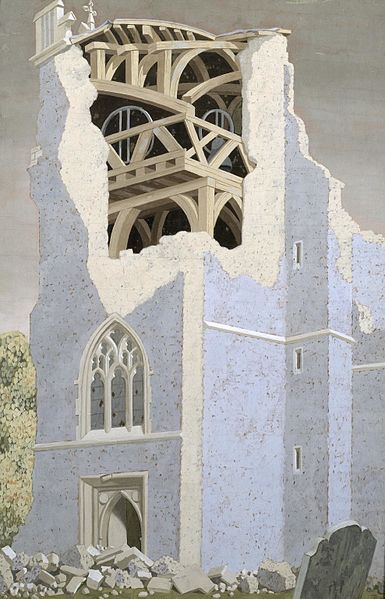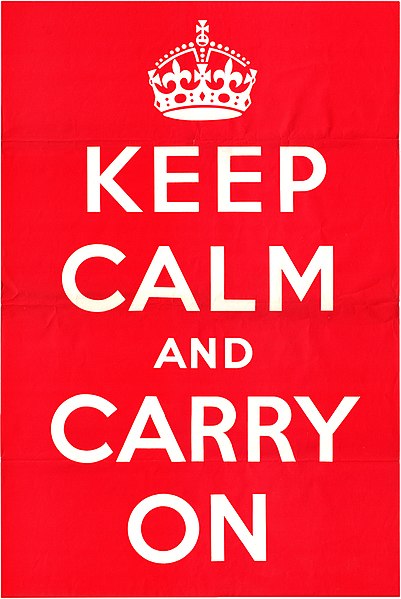War Artists' Advisory Committee
The War Artists' Advisory Committee (WAAC), was a British government agency established within the Ministry of Information at the outbreak of the Second World War in 1939 and headed by Sir Kenneth Clark. Its aim was to compile a comprehensive artistic record of Britain throughout the war. This was achieved both by appointing official war artists, on full-time or temporary contracts and by acquiring artworks from other artists. When the committee was dissolved in December 1945 its collection consisted of 5,570 works of art produced by over four hundred artists. This collection was then distributed to museums and institutions in Britain and around the world, with over half of the collection, some 3,000 works, going to the Imperial War Museum.
Factory workers going to work at the Mather & Platt, Manchester, in the snow, by L. S. Lowry, 1943
The Passage to the Control-room at South West Regional Headquarters, Bristol, (Art. IWM ART LD 170), by John Piper
Coggeshall Church, Essex, (Tate, 1940) by John Armstrong
A Brother and Sister Sheltering in the Underground, 1941, (Art.IWM ART LD 795), by Edmond Xavier Kapp
Ministry of Information (United Kingdom)
The Ministry of Information (MOI), headed by the Minister of Information, was a United Kingdom government department created briefly at the end of the First World War and again during the Second World War. Located in Senate House at the University of London during the 1940s, it was the central government department responsible for publicity and propaganda. The MOI was dissolved in March 1946, with its residual functions passing to the Central Office of Information (COI); which was itself dissolved in December 2011 due to the reforming of the organisation of government communications.
Senate House, the Ministry of Information headquarters in London during World War II
Keep Calm and Carry On, a poster produced by the MOI in 1939 which, although printed and distributed, was never posted.






